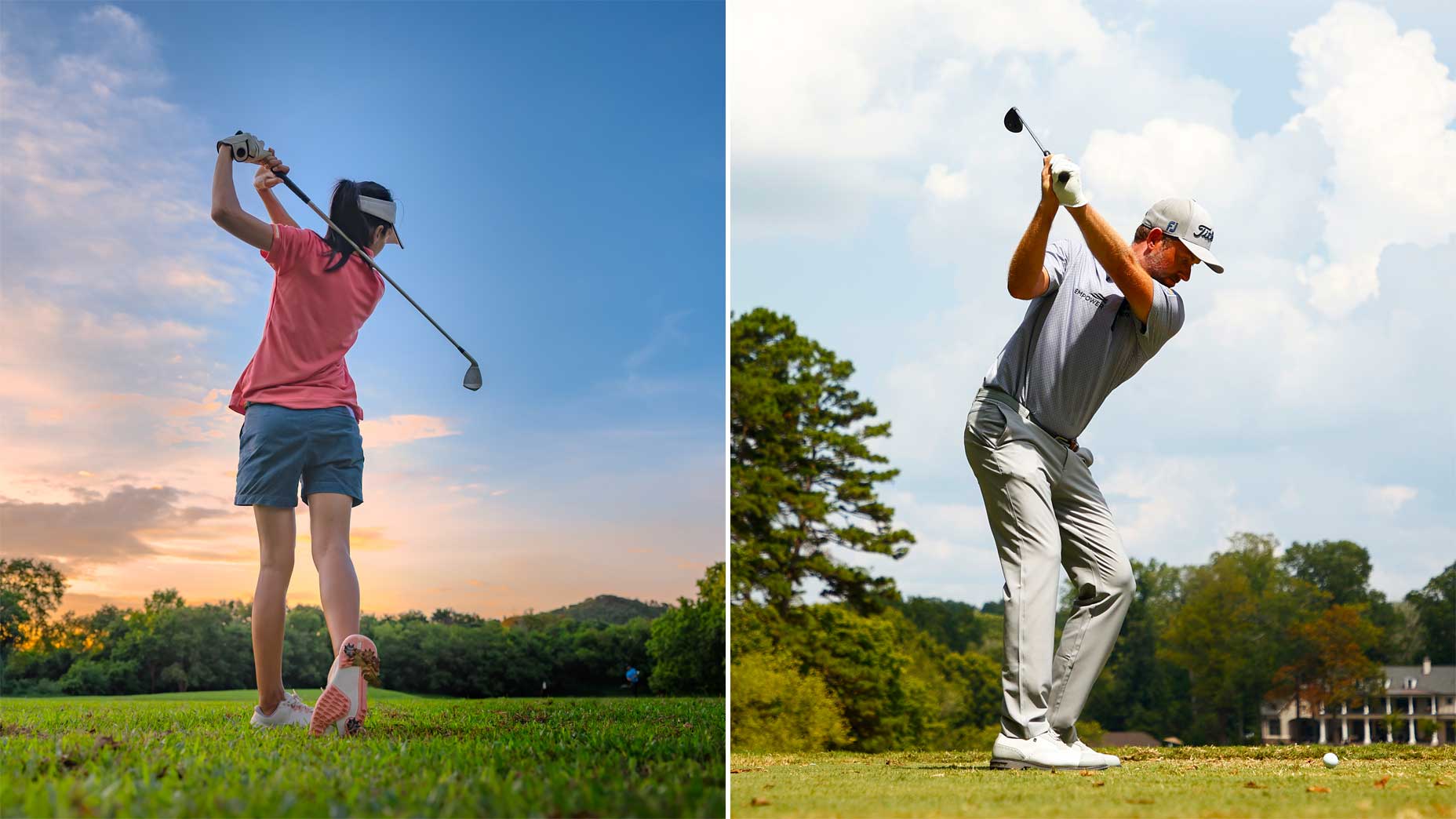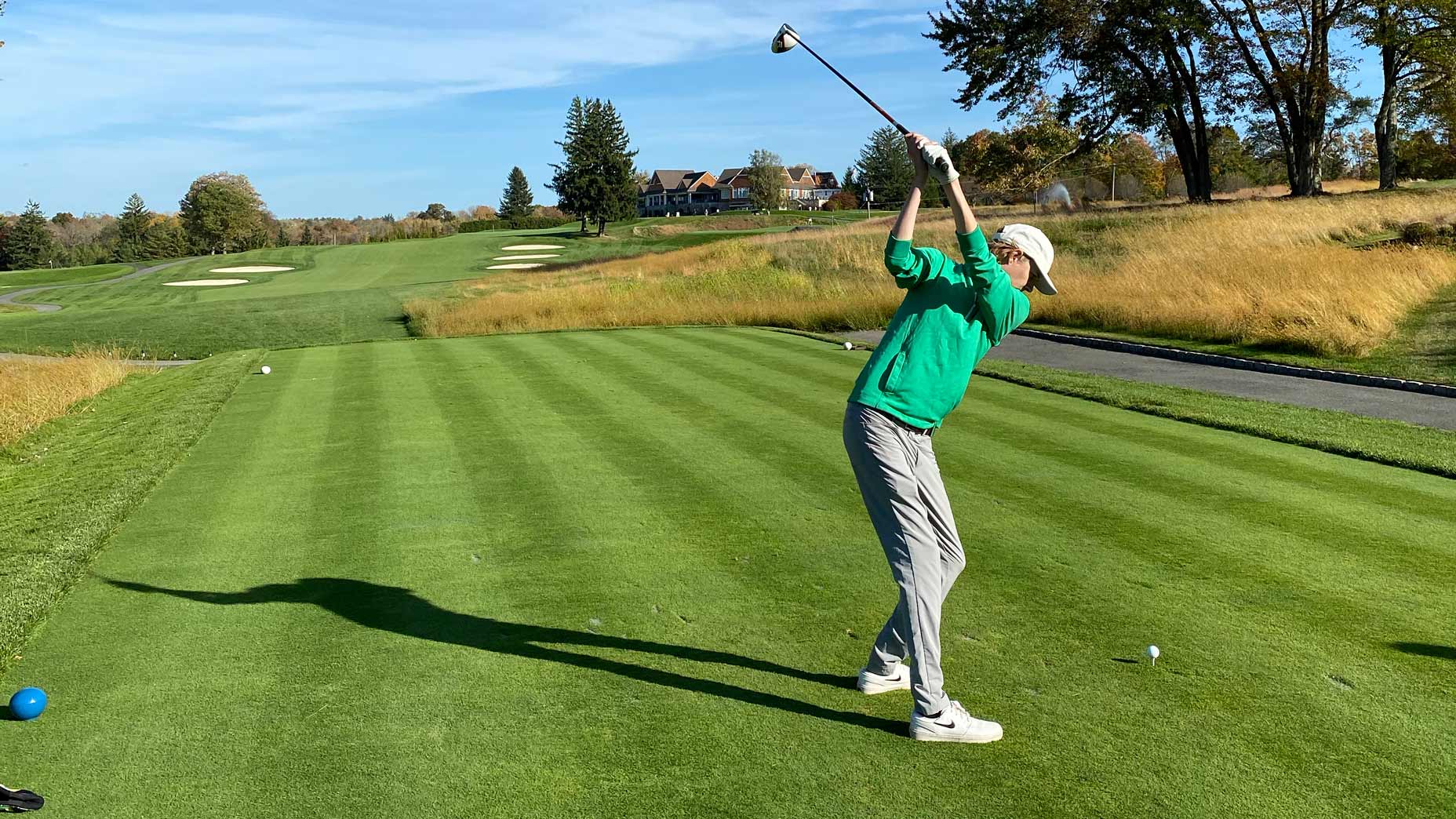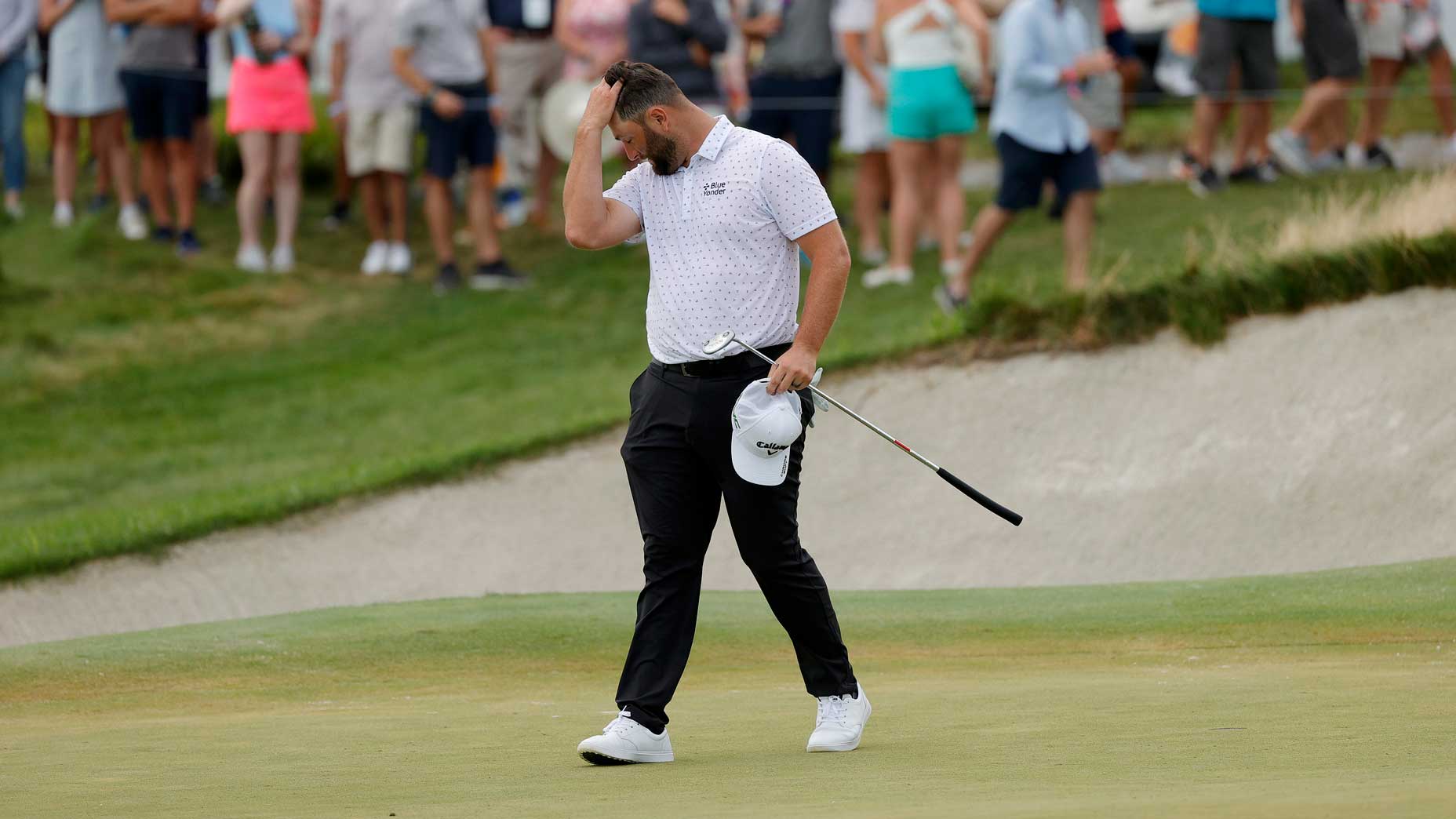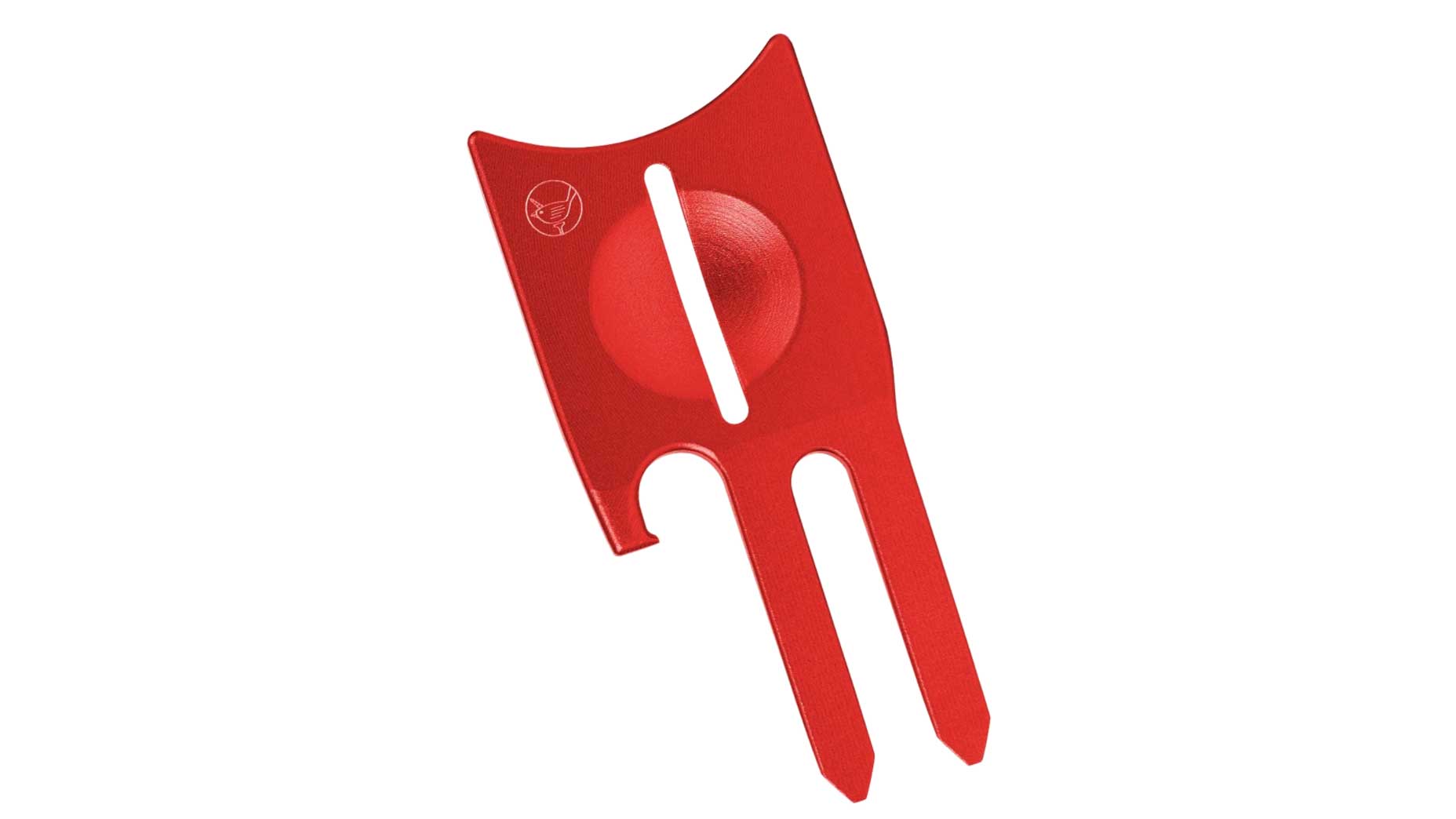
Analytics is changing golf.
Getty Images
Andrew Rice, director of instruction at The Club at Savannah Harbor and a GOLF Top 100 Teacher, has branded himself “the Everyday Golfer’s Coach.” This made him just the guy for PING to ask to take a look at the work of a company named Arccos, with which it had a fledgling partnership. As a man who prides himself on being fact-driven, not ego-driven, and who asks his students to be the same, Rice can admit that at first blush he didn’t see the big whoop.
“I said, ‘Eh, I don’t know, I’m good,’ ” Rice recalls of seeing Arccos in action back in spring 2019. “The guys at PING came back to me and said, ‘Andrew, please, take another look, because there’s something to this stuff.’ ”
Arccos’ stuff was, and is, data — terabytes of on-course information about shots struck by everyday golfers, distilled by proprietary A.I. into useful nuggets. Small IoT sensors attached to each club’s grip sync with an app in either a smartphone, smartwatch or Arccos’ wearable Caddie Link shot-tracking device and gather info that’s turned into, among other things, ShotLink-like data. Only Arccos’ data is richer, and not from Tiger Woods but rather John D’oh. (Arccos knows whether you hit a 6-iron or 7-iron; ShotLink does not.) Rice’s second look saw the scales fall from his eyes and Arccos’ potential impact come into focus.
“About 90 percent of my work with golfers is on the range — the practice field, not the battlefield,” says Rice. “I need to be very aware of ‘Is it very different on the course to what I’m seeing on the range?’ Arccos certainly could help with that.”
It also helped overcome another common bugaboo for instructors like Rice: demonstrating their investment in players’ improvement.
“As a coach, certainly I care about my students, but the challenge is me showing them that I care,” Rice says. “Arccos gives me the ability to demonstrate that I’m interested in how they’re doing.”
He does so today by dropping students a text or email after the details of their rounds pop up on the Arccos app, congratulating them on a good performance or pointing out what they can work on, or continue to work on, next lesson, armed with key stats from those nine or 18 holes.
“That, to me, is incredible,” says Rice.
Sal Syed, the Yale-educated co-founder of Arccos, understood the big opportunity presented by his initial meeting with John K. Solheim, PING’s president. His elevator pitch: You shouldn’t have to think you know your strengths and weaknesses, your distances and tendencies, and thus what to practice or what shot to play — you should know, full stop. Better golf through A.I.
“I was like, ‘John, just give me one round with you,’ ” Syed recalls. “Use the products, and you can decide whether it’s the future of the game or not.”
Syed knew PING to be potentially fertile ground. John K. was a trained engineer, like his father and company CEO John A. Solheim and his grandfather, company founder Karsten Solheim. This is the company that had built a ball-striking robot, PING Man, and employed surveyors’ tools in the analog days to collect data from its driving range. Data was in its DNA.
“To start getting real information of what’s going on at the course, this was my dream when I started at PING 20 years ago,” says Paul Wood, VP of engineering. “The ability to add in a new data set to our knowledge environment is like gold dust for our teams.”
Luckily for Wood and his team, and for Syed, John K. did try the product and was interested enough to start a trial—with homework for staffers the envy of any desk jockey.
In order to build a test database, about 30 PING employees began playing as much golf as they could fit into their schedules, with Arccos sensors on their clubs. After a couple of months, the company had about 70,000 shots to review. Among them were shots from John K., who proved an interesting case.
All of our market picks are independently selected and curated by the editorial team. If you buy a linked product, GOLF.COM may earn a fee. Pricing may vary.
Arccos Bundle
$279.99
Take your game to the next level this golf season with a special bundle of Arccos Caddie Smart Sensors and Arccos Caddie Link. Arccos’ Smart Sensors sync with the award-winning Arccos Caddie app to deliver automatic shot tracking, a rangefinder and strokes gained insights, powered by A.I. And now with Arccos Caddie Link, a powerful wearable, you can leave your phone in the bag to play the game your way.
“We saw that he was missing six times more greens to the left than the right, which is not the best fitting or aiming pattern, I guess,” says Chris Broadie, PING’s head of fitting science (as well as the son of Strokes Gained stats innovator Mark Broadie). “Something’s got him biased pretty far to the left.”
John K. found Arccos’ data illuminating, and he eventually moved ahead with a partnership (joining Cobra in that regard). Today, PING gets upwards of six million shots a month from Arccos. Six million. For comparison’s sake, the PGA Tour’s ShotLink data covers 1.2 million shots annually, so PING sees five times as much data in one-twelfth the time. (Even an English major who didn’t know that “Arccos” is the inverse of the cosine function can appreciate the difference in scale.) In sum, Arccos has now tracked more than 450 million shots from 3 million clubs over 7 million rounds and has 31 billion on-course data points, including club, shot, GPS location and even wind and humidity.
Back to John K. Armed with such a troubling left tendency, Arccos’ Caddie function would direct the player to check his aim and practice this weakness. (Not everyone has a coach, after all.) A coach like Andrew Rice could have made swing adjustments and suggested drills to try to fix the problem. He also could check the next few on-course results from Arccos on the Dashboard function and see if the tweaks were working or if further changes were needed.
PING, meanwhile, makes golf clubs. It also tries its damnedest to fit them perfectly to the end user. Especially, say, the company president. How did PING solve a problem like John K.? By moving him into a stiffer, slightly heavier shaft. Broadie recently looked at John K.’s latest swing data, because it’s never really a bad idea to check in on the boss’ welfare.
“Over his last 20 rounds, he’s gone from six times more greens missed left to only 57 percent left and 43 percent right,” Broadie says. “So, after a post-fitting diagnosis we’ve taken his big left bias and gotten him to a better spot through Arccos data.”
Flip the telescope back around, from the individual to the collective, and the power of big data like Arccos provides has potentially (and appropriately) huge implications. First for teaching and clubfitting, such as autogenerated fittings and data-driven push messages suggesting that, say, you adjust the bias on your PING G425 driver (which now comes standard with Arccos). But club design itself will be impacted too.
When you learn, as PING did, that average players are upwards of four times more likely to be hitting partial shots than full shots with gap through lob wedges, you’re going to start testing wedges differently and designing the soles a bit differently too. When you know how far different iron shots fly on the course for different handicap golfers (and soon, in different weather conditions and from the tee versus fairway versus rough), you’re going to tweak the gapping for each club in the set and tweak the models for different types of customers.
“If Arccos saw a player missing the fairway left a bunch, its advice would be, ‘Aim to the right,’ ” PING’s Wood says. “We might say, ‘Maybe try the CG shifter in the fade position on your driver.’ A coach might say, ‘Let’s tuck this elbow in.’ You’re all trying to do the same thing, just with different ways of getting there.”
Going forward, crunching the ball means crunching the numbers too.












